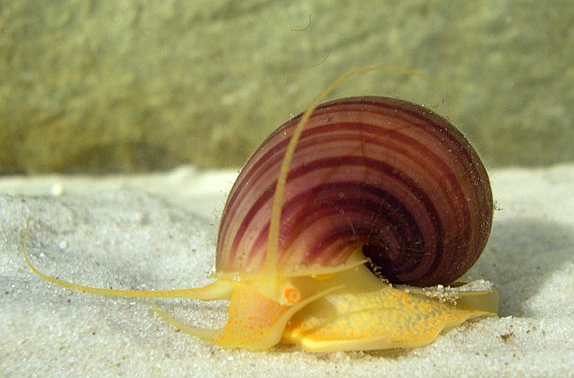Rangia Clams:

By far the most numerous aquatic creature in and on the Manchac Greenway is the Rangia Clam (Rangia cuneta). They grow in estuaries all around the Gulf of Mexico/Caribbean Basin and their ancient deposits once blanketed the bottoms of the Pontchartrain Lakes. They were extensively mined as a building material until this activity got to be an environmental problem. Living colonies can still be found in shallow areas around the lakes.
Much of the roadbed and shoulders of the Hammond Hwy. and US 51/Manchac Greenway were made of the shell of this creature. Travelers will note the road’s shell-shoulder is extra wide in places to help contain the roadbed in this soggy environment, which is why digging them up is forbidden.
The little molluscs inside were a primary source of food for indigenous people and piles of shells left from their “clam-bakes” are found all along the Gulf Coast.
Apple Snails:

These freakishly large mollusks (family Ampullarioidea) are refugees from the pet shop trade that were, no doubt, carelessly dumped in local waterways by aquarium owners. Unfortunately, these creatures like it here and have quickly proliferated to upset native ecologies. They are largely unseen in our murky waters but their vivid pink egg clusters are easily spotted above the waterline on trunks and stalks.
Oddly enough, their empty shells have been turning up in great quantities on the shoulder of the Manchac Greenway. Though humans won’t eat them because they carry “rat lung-worm disease,” some animal that hasn’t heard this discouraging news is apparently dragging them out of the water, pulling them out of their shells and eating them on the side of the road. Only in Louisiana.
